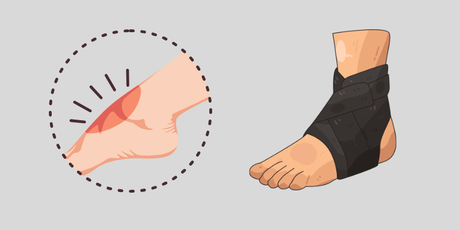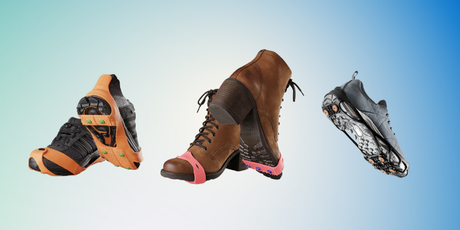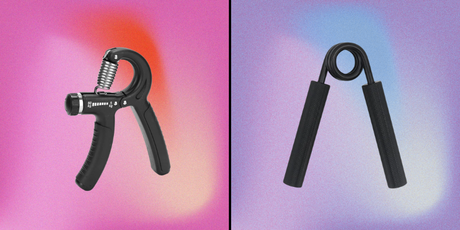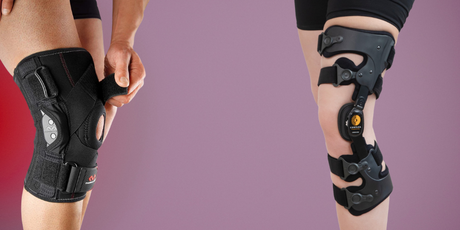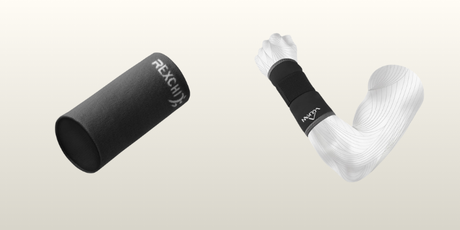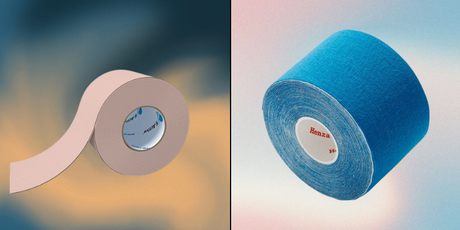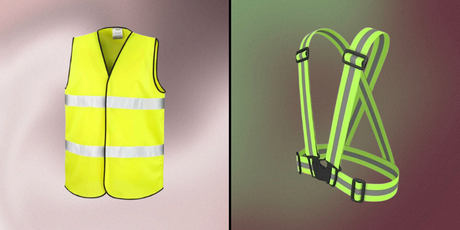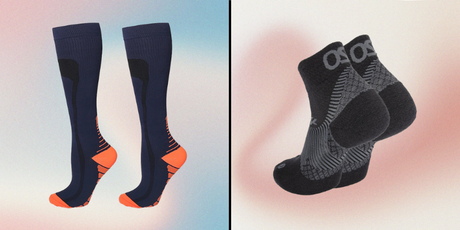Did you know how to use grip strengtheners properly can benefit athletes of every skill level - from weekend warriors to professionals?
That's right! A strong grip can help you hit heavy barbell deadlifts and hold onto chunky dumbbells during exercises, making your workouts more effective. Additionally, regular hand grip training enhances your strength for everyday activities like lifting objects or opening stubborn jar lids.
But here's the thing: many people purchase grip strengtheners without understanding how to use them correctly. Adjustable grippers provide an excellent entry point for most beginners due to their variable resistance, starting as low as 10kg and ranging up to 60kg. Furthermore, grip strengtheners come in different forms, each targeting specific aspects of hand and forearm strength.
The benefits extend beyond just gym performance. Stronger muscles are generally more resistant to injury, and hand grip exercises can even reduce stiffness and pain for people with arthritis by strengthening the muscles around joints.
Whether you're looking to improve athletic performance, prevent injuries, or simply make daily tasks easier, this step-by-step guide will walk you through everything you need to know about using grip strengtheners effectively.
Check out our collection of grip strengtheners if you’re ready to start your journey.
What is a grip strengthener and why use one?
A grip strengthener is a small, portable device designed to improve the strength and endurance of muscles in your hands and forearms. Typically consisting of two handles connected by a spring or resistance mechanism, these devices require you to squeeze the handles together, creating resistance that forces your muscles to work harder.
How grip strength affects daily life
Grip strength plays a crucial role in everyday activities that you might take for granted. From opening stubborn jar lids to carrying grocery bags, your grip strength directly influences your ability to perform daily tasks independently.
As you age, activities that once seemed effortless - like buttoning shirts, eating with utensils, or writing - may become challenging when grip strength diminishes. Research has shown that decreased grip strength is associated with reduced mobility, specifically in climbing stairs and walking. Men with grip strength less than about 82 pounds and women with less than 46 pounds often experience more mobility issues.
Moreover, grip strength serves as a reliable biomarker for overall health. Studies have revealed that grip strength is a better predictor of premature death than other obvious indicators such as blood pressure. Research has also linked grip strength to longevity, with some studies suggesting that a person's grip strength can indicate their likelihood of living past 100.
Types of grip strength: crush, pinch, support
Understanding the different types of grip strength helps you train more effectively:
- Crush Grip - This is what most people think of when considering grip strength - the ability to squeeze something between your palm and fingers, like closing your hand around an object or using a hand gripper. It's essential for activities like opening jars or holding onto gym equipment.
- Pinch Grip - This involves holding objects between your thumb and fingers without wrapping your hand around them. Think of picking up a weight plate by its smooth side or holding a key. Rock climbers especially benefit from strong pinch grip.
- Support Grip - This refers to your ability to hold onto something for an extended period. It's your grip endurance - how long you can hang from a pull-up bar or carry heavy shopping bags without letting go.
Each type engages different muscle groups in your hands and forearms, which is why comprehensive grip training involves exercises targeting all three types.
Do grip strengtheners work?
Yes, grip strengtheners absolutely work when used correctly and consistently. Like any muscle group, your hand and forearm muscles respond to resistance training by becoming stronger over time.
According to physical therapists and strength conditioning specialists, hand grip strengtheners effectively improve forearm strength when used as part of a comprehensive training routine. They follow the same principles as any form of strength training - challenging your muscles consistently and gradually increasing difficulty over time leads to sustained progress.
For optimal results, experts recommend selecting a grip strengthener that is challenging but not too difficult. It should require effort to complete repetitions without compromising proper form. Many advanced models feature adjustable resistance, allowing you to increase the challenge as your strength improves.
Nevertheless, while grip strengtheners are effective, they shouldn't be your only tool for developing hand and forearm strength. Your forearm muscles perform various functions beyond gripping, including wrist extension and elbow flexion, so a well-rounded approach incorporating different exercises yields the best results.
Choosing the right grip strengthener
Selecting the perfect grip strengthener depends primarily on your current strength level and specific training goals. Before purchasing, consider whether you need it for general strength improvement, specific sports performance, or rehabilitation purposes.
Adjustable vs fixed resistance
When deciding between adjustable and fixed resistance grip strengtheners, consider your long-term training plans.
Adjustable grip strengtheners offer significant versatility through their variable resistance mechanism. By simply turning a knob or changing components, you can increase or decrease the challenge level. This adaptability makes them particularly cost-effective since one device serves multiple strength levels. Most adjustable models range from 10kg to 60kg resistance, allowing gradual progression without purchasing additional equipment.
Fixed resistance grip strengtheners, conversely, maintain consistent tension throughout their lifespan. These devices typically come in specific resistance levels such as 100, 150, 200, 250, 300, and 350 pounds. Although less versatile than adjustable options, fixed resistance models usually offer superior build quality with fewer moving parts. They're often preferred by serious grip training enthusiasts seeking precise resistance levels for targeted strength development.
Consequently, if you're uncertain about commitment level or working within a budget, adjustable grip strengtheners provide the most practical starting point.
Take a look at our adjustable resistance grip strengthener.
Grip rings and finger bands
Beyond traditional grippers, alternative tools offer unique benefits for comprehensive hand strength development.
Grip rings (sometimes called stress balls or resistance rings) typically feature a flower-shaped design with ridges that guide finger placement. Made from durable silicone or rubber, these circular devices primarily target finger strength rather than forearm development. Their ergonomic design makes them excellent for warming up, active recovery days, and building specific crushing strength. Available in multiple resistance levels (commonly 30lb to 80lb), they allow for progressive training.
Finger bands focus on an often-neglected aspect of grip training - the expansion movement. Unlike traditional grippers that strengthen the muscles used to close your hand, finger bands target the extensor muscles that open your fingers. This counterbalance helps prevent muscle imbalances and improves overall hand function. Rock climbers, gymnasts, and athletes requiring secure grips particularly benefit from these bands.
Beginner-friendly options
For those new to grip training, starting with appropriate resistance prevents frustration and injury.
Most experts recommend beginners choose a grip strengthener that allows completion of 5-10 clean repetitions with proper form. This typically means:
- Adjustable hand grippers - Ideal first purchase due to their variable resistance and comfortable cushioned handles.
- Light fixed-resistance grippers - The 100lb resistance model serves as an excellent starting point for most beginners.
- Grip ring sets - Beginning with lower resistance rings (30-50lb) helps establish proper technique before advancing.
If you already engage in weightlifting or manual labour, consider starting with a set that includes both 100lb and 150lb resistance options to provide room for rapid progression.
Remember that training consistently with the right grip strengthener builds more strength than struggling with one that's too challenging. Prioritise proper form and complete range of motion over impressive resistance numbers.
See our beginner-friendly grip strengtheners.
How to use a grip strengthener properly
Proper form and technique are essential when using a grip strengthener to maximise results and prevent potential injuries. Mastering the correct approach ensures you target the right muscles effectively throughout your training.
Correct hand placement and posture
Proper positioning starts with placing one handle against your palm at a 45-degree angle - not completely sideways. This angle allows your pinky finger to reach the end of the handle, which plays a crucial role in completing the squeeze. Position the grip strengthener just above your thumb knuckle rather than directly on it to maintain optimal squeezing power. Keep your fingers close together without separation to create maximum tension and fully engage the muscles around your knuckles.
Maintain a neutral wrist position throughout the exercise to distribute pressure evenly across your forearm, preventing potential injury. Proper breathing is likewise important - maintain a consistent pattern to support muscle function, deliver oxygen efficiently, and aid waste removal from working muscles.
Step-by-step: regular closes
Regular closes are the fundamental grip strengthener exercise:
- Place one handle on your palm and position the other across your fingers
- Set your grip strengthener to a manageable resistance level if using an adjustable model
- Close your hand and squeeze the handles together completely
- Hold the closed position briefly to maximise muscle engagement
- Control the release rather than allowing the handles to spring back
- Repeat for your desired number of repetitions
As a beginner, focus on proper form over heavy resistance. A complete rep requires fully closing the handles together to utilise the full range of motion.
Step-by-step: negative reps
Negative reps are excellent for building crushing power and training your central nervous system:
Initially position the grip strengthener as you would for regular closes. Close it normally, then hold it shut. Subsequently, release it very slowly over 6-8 seconds, resisting the opening. Once fully opened, immediately close it again as hard and fast as possible. This technique focuses on the eccentric portion of the movement, significantly improving crush grip strength. Begin with 3-5 sets of 10 repetitions, concentrating on the controlled release.
Step-by-step: inverted and pinch reps
Inverted grip closes primarily strengthen your index and middle fingers, which are less engaged during regular closes. Simply hold the grip strengthener upside down in your hand and close it normally. Although potentially easier than standard closes, this variation ensures balanced finger strength development.
For pinch grip closes, position the strengthener slightly higher in your hand. Instead of wrapping all fingers around it, use only your top 1-3 fingers. This technique strengthens specific fingers and enhances overall grip power, helping with other lifting activities like plate pinches.
How often should you train?
Most experts recommend training grip 2-3 times weekly. This frequency provides adequate recovery time between sessions while ensuring consistent progress. One session might focus on higher repetitions with lower resistance for endurance, while another could emphasise lower reps with heavier resistance for maximum strength. Beginners should start with limited volume and gradually increase over time. Listen to your body - excessive fatigue, discomfort, or strain indicates you need more recovery time.
Training progression and accessory exercises
For progressive grip training success, following a structured approach helps you achieve consistent strength gains. Let's explore how to advance your grip training journey effectively.
Beginner to advanced rep schemes
Progressive overload is essential for continuous improvement in grip strength. For beginners, start with 2-3 sets of 8-12 repetitions, training 2-3 times weekly. As your hands adapt, intermediate trainees should aim for 3-4 sets of 8-12 repetitions, 3-4 times weekly. Eventually, advanced users can progress to 4-6 sets of 8-12 repetitions, 4-5 times per week.
Alternatively, some research suggests three sets of 20 reps with 60-second rest periods, performed three times weekly over eight weeks, yields significant hand grip strength improvements.
Using sets and rest periods effectively
Rest intervals significantly impact your training outcomes. For strength-focused training, allow 60-90 seconds between sets. This recovery time enhances muscle regeneration whilst minimising fatigue.
Your grip training structure might include:
- Five sets of ten regular reps with 30-60 seconds rest
- Five sets of negative reps (focusing on slow release)
- Three to four sets of inverted reps
- Maximum repetition test to gauge progress
Remember to give your muscles proper recovery time - at least one day between sessions - as your central nervous system needs time to adapt despite your hands feeling ready.
Accessory tools: wrist rollers, thick grips, pinch blocks
Truly comprehensive grip development requires varying training implements beyond standard grippers. Wrist rollers excellently develop forearm muscularity and support grip endurance. Thick grips attach to barbells or cable attachments, engaging more muscles during regular exercises.
Pinch blocks come in various sizes for targeting different aspects of pinch strength - narrow, mid, and wide. Other beneficial accessories include plate pinching exercises and dumbbell pick-ups.
Tracking your progress over time
Monitoring improvement maintains motivation throughout your grip training journey. Use a consistent measurement approach - perhaps recording maximum repetitions or timing how long you can hold maximum squeezes.
Ultimately, tracking enables you to identify patterns, adjust training variables, and celebrate milestones along your path toward exceptional grip strength.
Grip strengthener benefits beyond the gym
The benefits of regular grip strengthening extend far beyond just improving your performance in the gym. In fact, stronger hands and forearms contribute to numerous aspects of your health and daily life.
Improved sports performance
Research has established strong correlations between grip strength and performance in various sports. For tennis players, dominant hand grip strength strongly correlates with serve velocity. Similarly, grip strength serves as a reliable predictor of success in martial arts. Rock climbers with better grip strength consistently outperform their counterparts, with recreational climbers outperforming non-climbers in six out of seven grip tests.
Better injury prevention and recovery
First and foremost, grip strengtheners help strengthen the muscles surrounding your wrists, making them more stable and less prone to injury. This stability reduces the risk of repetitive strain injuries, benefiting both athletes and office workers. Furthermore, grip training aids rehabilitation by promoting blood flow to damaged areas, introducing nutrients that speed up recovery.
Stress relief and mental focus
Remarkably, hand grip exercises can reduce stress levels because they activate muscles in the wrist and hand. The repetitive squeezing motion triggers relaxation responses in your nervous system, decreasing stress hormone production while promoting endorphin release.
Hand grip exercise for arthritis and joint health
Hand exercises significantly help women with hand osteoarthritis by improving grip strength, hand function, pain levels, and reducing fatigue. Regular squeezing of a soft rubber ball makes a noticeable difference in joint mobility. Grip training helps build strength in the muscles surrounding affected joints, potentially reducing pain and improving overall hand functionality.
Conclusion
Developing your grip strength clearly extends far beyond simply improving your performance in the gym. Throughout this guide, you've learned that proper grip training affects everything from daily activities like opening jars to enhancing your athletic performance across multiple sports. Additionally, the evidence shows that grip strength serves as a remarkable indicator of overall health and longevity.
Starting with the right strengthener for your current ability level is essential. Whether you choose an adjustable model that grows with your progress or fixed resistance options for targeted training, consistency remains the key factor in achieving results. After all, even the most advanced grip tool provides little benefit without proper technique and regular practice.
The variety of exercises outlined - from regular closes to negative reps and specialised variations - ensures you can target all aspects of hand and forearm strength effectively. Following the recommended training frequency of 2-3 sessions weekly gives your muscles adequate recovery time while still promoting steady improvement.
Perhaps most significantly, the benefits of stronger hands reach into unexpected areas of your life. Reduced injury risk, faster recovery from existing issues, stress relief, and even improved management of conditions like arthritis make grip training worthwhile for virtually everyone.
Take what you've learned from this guide and start incorporating grip strengthener exercises into your routine. Begin with manageable resistance, focus on proper form, and gradually increase the challenge as you progress. Your hands and forearms will thank you - not just during your next workout but throughout your daily activities for years to come.




